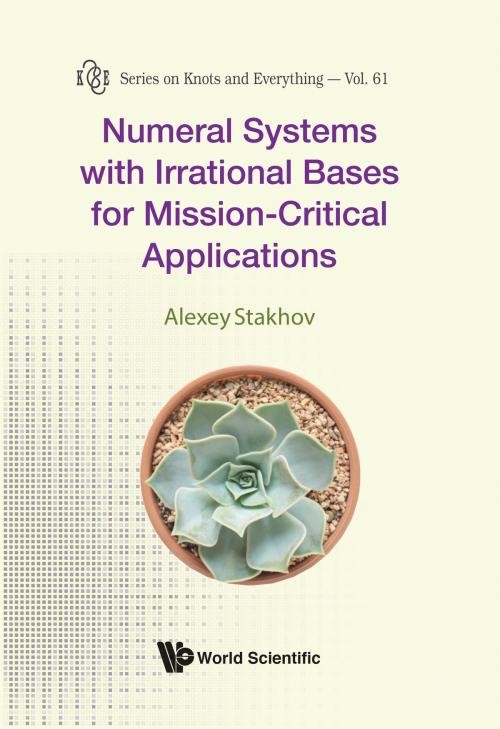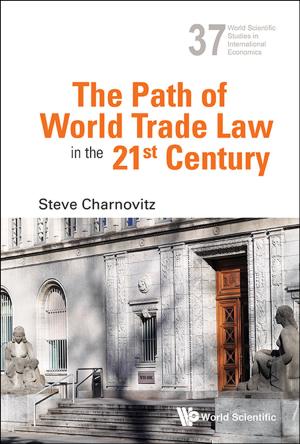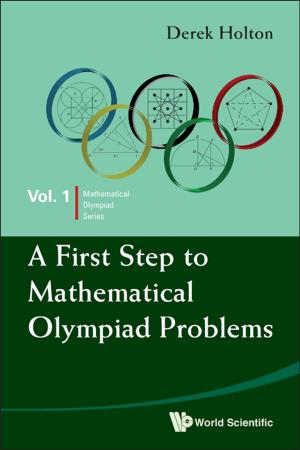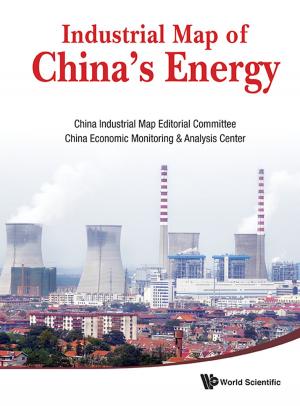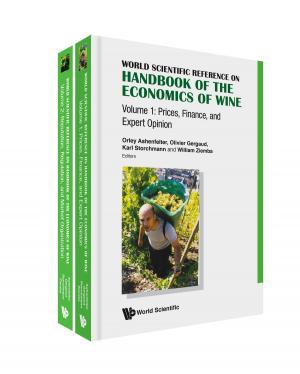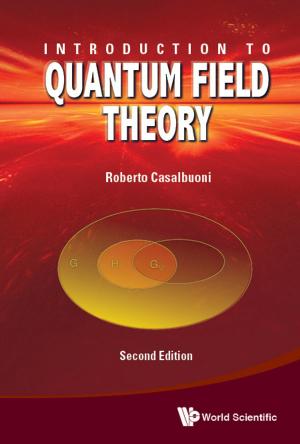Numeral Systems with Irrational Bases for Mission-Critical Applications
Nonfiction, Science & Nature, Mathematics, Number Theory, Computers, Advanced Computing, Computer Science| Author: | Alexey Stakhov | ISBN: | 9789813228634 |
| Publisher: | World Scientific Publishing Company | Publication: | October 17, 2017 |
| Imprint: | WSPC | Language: | English |
| Author: | Alexey Stakhov |
| ISBN: | 9789813228634 |
| Publisher: | World Scientific Publishing Company |
| Publication: | October 17, 2017 |
| Imprint: | WSPC |
| Language: | English |
This volume is the result of the author's many-years of research in this field. These results were presented in the author's two books, Introduction to the Algorithmic Measurement Theory (Moscow, Soviet Radio, 1977), and Codes of the Golden Proportion (Moscow, Radio and Communications, 1984), which had not been translated into English and are therefore not known to English-speaking audience. This volume sets forth new informational and arithmetical fundamentals of computer and measurement systems based on Fibonacci p-codes and codes of the golden p-proportions, and also on Bergman's system and "golden" ternary mirror-symmetrical arithmetic. The book presents some new historical hypotheses concerning the origin of the Egyptian calendar and the Babylonian numeral system with base 60 (dodecahedral hypothesis), as well as about the origin of the Mayan's calendar and their numeral system with base 20 (icosahedral hypothesis). The book is intended for the college and university level. The book will also be of interest to all researchers, who use the golden ratio and Fibonacci numbers in their subject areas, and to all readers who are interested to the history of mathematics.
Contents:
- Preface
- Introduction
- Acknowledgements
- Preliminary Historical and Mathematical Information
- A New View on Numeral Systems: Unusual Hypotheses, Surprising Properties and Applications
- Bergman's System, "Golden" Number Theory and Mirror-Symmetrical Arithmetic
- Fibonacci p-Codes, and Concept of Fibonacci Computers
- Codes of the Golden p-Proportions and Their Applications in Computer Science and "Golden" Metrology
Readership: Researchers in mathematics and computer science.
Key Features:
- Dodecahedral hypothesis about the origin of the Egyptian calendar and Babylonian numeral system with the base 60
- Icosahedral hypothesis about the origin of the Mayan's calendar and their numeral system with the base 20
- Detailed description of properties of the Bergman system and its application in the "golden" number theory and ternary mirror-symmetrical arithmetic
- Description of the theory of Fibonacci p-codes and Fibonacci arithmetic for mission-critical informational systems
- Description of the theory of the codes of the golden p-proportions and its application in self-correcting analog-to-digital and digit-to-analog converters
This volume is the result of the author's many-years of research in this field. These results were presented in the author's two books, Introduction to the Algorithmic Measurement Theory (Moscow, Soviet Radio, 1977), and Codes of the Golden Proportion (Moscow, Radio and Communications, 1984), which had not been translated into English and are therefore not known to English-speaking audience. This volume sets forth new informational and arithmetical fundamentals of computer and measurement systems based on Fibonacci p-codes and codes of the golden p-proportions, and also on Bergman's system and "golden" ternary mirror-symmetrical arithmetic. The book presents some new historical hypotheses concerning the origin of the Egyptian calendar and the Babylonian numeral system with base 60 (dodecahedral hypothesis), as well as about the origin of the Mayan's calendar and their numeral system with base 20 (icosahedral hypothesis). The book is intended for the college and university level. The book will also be of interest to all researchers, who use the golden ratio and Fibonacci numbers in their subject areas, and to all readers who are interested to the history of mathematics.
Contents:
- Preface
- Introduction
- Acknowledgements
- Preliminary Historical and Mathematical Information
- A New View on Numeral Systems: Unusual Hypotheses, Surprising Properties and Applications
- Bergman's System, "Golden" Number Theory and Mirror-Symmetrical Arithmetic
- Fibonacci p-Codes, and Concept of Fibonacci Computers
- Codes of the Golden p-Proportions and Their Applications in Computer Science and "Golden" Metrology
Readership: Researchers in mathematics and computer science.
Key Features:
- Dodecahedral hypothesis about the origin of the Egyptian calendar and Babylonian numeral system with the base 60
- Icosahedral hypothesis about the origin of the Mayan's calendar and their numeral system with the base 20
- Detailed description of properties of the Bergman system and its application in the "golden" number theory and ternary mirror-symmetrical arithmetic
- Description of the theory of Fibonacci p-codes and Fibonacci arithmetic for mission-critical informational systems
- Description of the theory of the codes of the golden p-proportions and its application in self-correcting analog-to-digital and digit-to-analog converters
